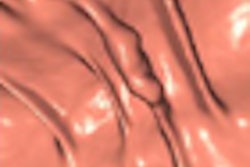A study that compared patients in the Netherlands who received brachytherapy to those who qualified for this treatment but had a radical cystectomy instead revealed comparable survival outcomes five years after treatment.
Radical cystectomy, or removal of the bladder, is the treatment of choice for patients diagnosed with muscle-invasive bladder cancer. Brachytherapy treatment is controversial but provides a bladder-sparing alternative for a select group of patients.
The retrospective study, published online in Radiotherapy and Oncology (May 20, 2009), was conducted in lieu of analyzing the outcomes of a hypothetical randomized trial that in all likelihood will never be implemented, according to lead author and radiation oncologist Dr. Elzbieta van der Steen-Banasik of the ARTI Institute for Radiation Oncology Arnhem located in Arnhem, Netherlands.
The Arnhem Radiotherapy Institute has been treating bladder cancer in a select group of patients with transurethral tumor resection, external-beam radiation, and interstitial brachytherapy. Patients diagnosed with a solitary T1, grade 3, or T2 bladder cancer tumor less than 5 cm who are healthy enough to undergo surgery and have sufficient bladder function are eligible.
The brachytherapy patients
The outcomes of 76 patients who received this trimodal treatment between 1983 and 2002 at the Arnhem Radiotherapy Institute were studied. The 67 men and nine women had a mean age of 68.3 years at the time of treatment. Fifteen had cT1 tumors and 61 had cT2 tumors.
Three weeks after transurethral tumor resection, all of the patients received external-beam radiation, either in three to four fractions (3.5 Gy) delivered in one week for patients with cT1 tumors, or in 20 fractions (2.0 Gy) in four weeks for patients with cT2 tumors.
Seven days after completion of radiation therapy, two to five afterloading catheters were surgically inserted into the bladder wall and fixed to the skin surface. Imaging and computer planning was performed the same day. The irradiation dose prescribed was 0.5 cm from an axis of the source. The brachytherapy dose was either 30 or 60 Gy, depending upon the length of the external-beam radiation treatment. The brachytherapy dose was delivered continuously over a period of either three or six days. Patients were hospitalized an average of 10 days.
The cystectomy patients
To identify patients comparable to those treated at Arnhem Radiotherapy Institute, the researchers reviewed the records of bladder cancer patients treated at University Medical Center Nijmegen and Canisius-Wilhelmina Hospital, both located in Nijmegen, and Rijnstate Hospital in Arnhem between 1991 and 2001. Out of 633 cases, 289 patients had a radical cystectomy.
Of these, 65 patients would have been eligible to receive the trimodal brachytherapy treatment if offered the choice. This cohort consisted of 52 men and 13 women, with a mean age of 65 at the start of treatment. All 65 patients had cT2 tumors.
Forty-two patients had a radical cystectomy in which the bladder was removed, as well as the prostate and seminal vessels for men and the uterus, adnexa, and part of the vagina for women. Twenty-two patients had orthotopic neobladder formation, and one patient received an Indiana pouch. The patients were hospitalized for a median of 21 days, with the earliest hospital discharge at eight days and the longest at 5.9 months.
Outcomes
The 65 brachytherapy treatment patients were followed for a median of 5.7 years (range, 0.2 to 21.4 years) and the 65 cystectomy patients for a median of 5.05 years (range, 0.04 to 16.8 years). After adjusting for a five-year median age difference between the two groups, statistical analysis determined that survival outcomes were comparable. Actual statistics, not adjusted for age discrepancy, are summarized below.
|
The researchers attributed a lower survival rate for the brachytherapy group to their advanced median age of 78 years, compared with 73 years for the cystectomy group.
Patients who were in the brachytherapy group had a much higher percentage of cancer recurrence at 46%, compared with 33.8% for the cystectomy patients. Thirty-five patients in the brachytherapy group had a recurrence, all within 2.5 years of treatment. Twenty-five patients developed local recurrence, and 10 patients developed distant metastases. Thirteen patients ultimately required a cystectomy, one of whom died of postoperative complications.
Twenty-two patients in the cystectomy group developed recurrences, which materialized between one and 51 months following surgery. The majority occurred within two years. Seven patients developed local recurrence only, nine patients developed distant metastases, and six patients developed both.
Substantially fewer brachytherapy-treated patients experienced adverse events, with only 27.6% experiencing adverse effects, compared with 72% of the cystectomy patients. Acute toxicity was also much lower for the brachytherapy group, with only 17% experiencing it, compared with 52% of the cystectomy group. Late toxicity patterns were similar: 10% for the brachytherapy group and 46% for the cystectomy group.
In the brachytherapy-treated patients, one patient died of cardiac failure postoperatively. Adverse effects included wound infections, temporary urine leakage, postoperative ileus, bladder bleeding, and pneumonia.
In the cystectomy group, 34 patients experienced acute toxicity within 90 days, and 30 patients experienced late toxicity after 90 days. Two patients died as a result of the surgery. Adverse effects included bleeding, wound problems, sepsis, stoma problems, ileus, perforation of the intestine requiring surgery, urethral anastomosis problems, a leaking pouch, and an abscess on the pelvis requiring drainage.
The additional benefits of the brachytherapy treatment are fewer days of hospitalization and faster recovery, minor instead of major surgery, no need for lifetime continence devices, and a significantly improved quality of life for the patient.
Is it worth the risk? For a select group of patients, the oncologists at the Arnhem Radiotherapy Institute say yes.
By Cynthia E. Keen
AuntMinnie.com staff writer
June 10, 2009
Related Reading
Spending more to treat early bladder cancer does not alter outcome, April 8, 2009
Multimodal treatment may help invasive bladder cancer, January 30, 2008
Copyright © 2009 AuntMinnie.com


















